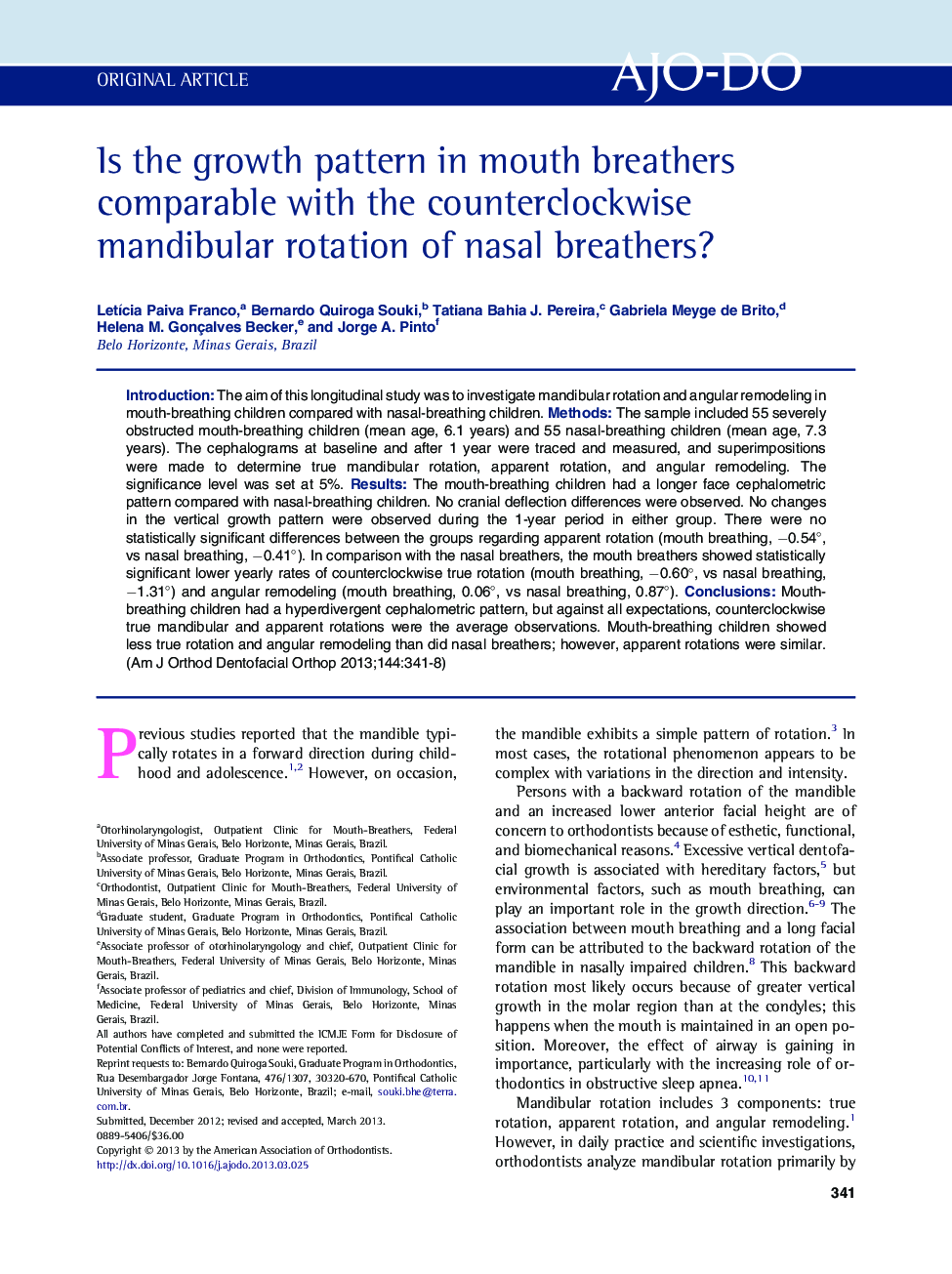| Article ID | Journal | Published Year | Pages | File Type |
|---|---|---|---|---|
| 3117040 | American Journal of Orthodontics and Dentofacial Orthopedics | 2013 | 8 Pages |
IntroductionThe aim of this longitudinal study was to investigate mandibular rotation and angular remodeling in mouth-breathing children compared with nasal-breathing children.MethodsThe sample included 55 severely obstructed mouth-breathing children (mean age, 6.1 years) and 55 nasal-breathing children (mean age, 7.3 years). The cephalograms at baseline and after 1 year were traced and measured, and superimpositions were made to determine true mandibular rotation, apparent rotation, and angular remodeling. The significance level was set at 5%.ResultsThe mouth-breathing children had a longer face cephalometric pattern compared with nasal-breathing children. No cranial deflection differences were observed. No changes in the vertical growth pattern were observed during the 1-year period in either group. There were no statistically significant differences between the groups regarding apparent rotation (mouth breathing, −0.54°, vs nasal breathing, −0.41°). In comparison with the nasal breathers, the mouth breathers showed statistically significant lower yearly rates of counterclockwise true rotation (mouth breathing, −0.60°, vs nasal breathing, −1.31°) and angular remodeling (mouth breathing, 0.06°, vs nasal breathing, 0.87°).ConclusionsMouth-breathing children had a hyperdivergent cephalometric pattern, but against all expectations, counterclockwise true mandibular and apparent rotations were the average observations. Mouth-breathing children showed less true rotation and angular remodeling than did nasal breathers; however, apparent rotations were similar.
